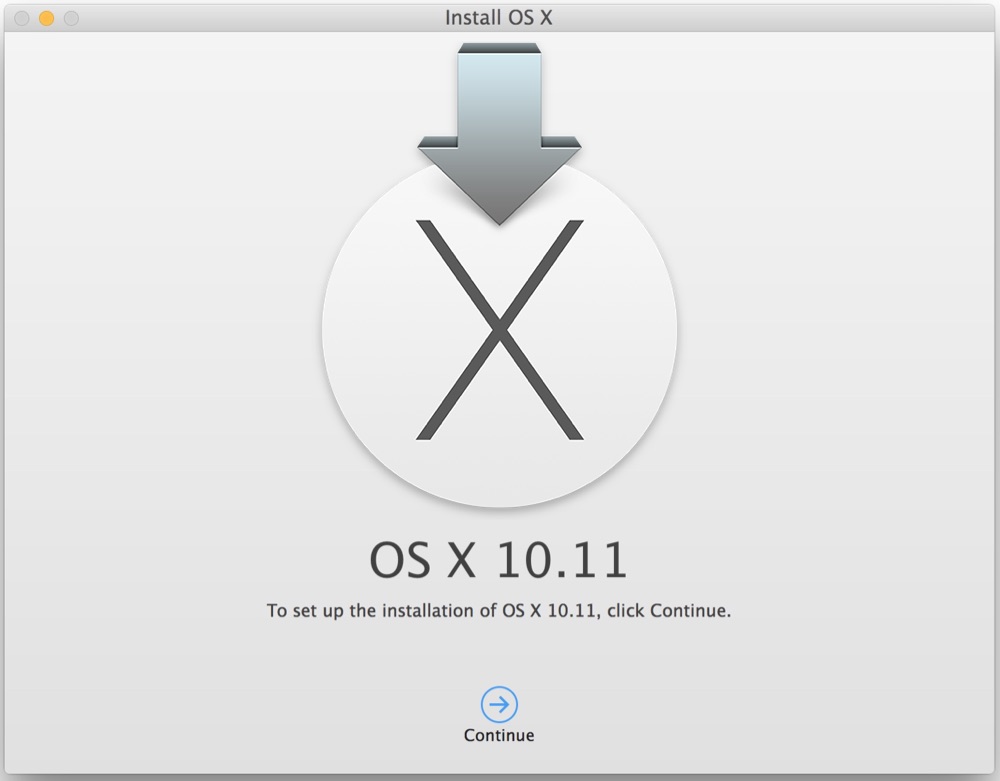- In order to install macOS High Sierra on your Windows computer, you will need the following hardware: USB drive - Find a flash drive that can hold at least 16 gigabytes. Blank hard drive - Find a USB external hard drive that holds at least 100 gigabytes (this is where you'll install your macOS stuff, so the bigger, the better).
- Because of this, I recommend creating your own bootable El Capitan (OS X 10.11) installer drive on an external hard drive or USB thumb drive. If you need to install El Capitan on multiple Macs.
- Purchase Mac OS X Lion installer on the Apple Store. When it was still Lion DiskMaker, DiskMaker X had the ability to burn DVDs too. Older versions are available here. Download DiskMaker 2.0.2 ( ZIP file, about 3 MB). NB: this version of DiskMaker X is not able to build a Mavericks installer from Mac OS X 10.6.8.
On this page:
- Reinstall El Capitan on a computer alreadyrunning it

Upgrade from previous versions to OS X 10.11 (El Capitan)
Install the macOS installer. Double-click the downloaded file to open a window showing its contents. Then double-click the file within, named InstallMacOSX.pkg. Follow the onscreen instructions, which will guide you through the steps necessary to install. Begin installation.
- From the Apple menu, select App Store....
- When the App Store opens, search for and download El Capitan. If you don't already have an Apple ID, you'll need to create one. You can monitor the download process in the 'Purchased' section of the App Store.
- Once the download is complete, the installer should automatically open.
If it doesn't, or you don't want to complete the installation at this time, you can come back later and double-click Install OS X El Capitan in your
Applicationsfolder.Within the installer, click Continue, agree to the license agreement, and then choose the disk where you want to install El Capitan.
After you begin the installation, your computer may need to restart more than once before finishing, and then you may be asked to enter basic information.
- From the Apple menu, select App Store..., and then install any available updates.
Reinstall El Capitan on a computer already running it

Reinstall while keeping files, applications, and settings
- Restart your computer, and immediately hold down
command-runtil the gray Apple logo appears. - If prompted, select your main language and then click the arrow.
- Click Reinstall OS X, and then Continue. Follow the instructions on the screen, and then choose your hard disk. Click Install, and enter your Apple ID information if prompted.
- When the installation is complete, select App Store... from the Apple menu, and install any available updates.
Reinstall while erasing everything on your computer

Restart your computer, and immediately hold down
command-runtil the gray Apple logo appears.- If you see a screen asking you to select your main language, choose it, and then click the arrow.
- Click Disk Utility, and then Continue.
- In Disk Utility:
- Click your hard disk in the left column, and then click the Erase tab.
- Next to 'Format:', make sure OS X Extended (Journaled) is selected. In the 'Name:' field, give your disk a name. Click Erase.
- Once it's completed, quit Disk Utility.
- Click Reinstall OS X, and then Continue:
- Follow the instructions on the screen, and then choose your hard disk.
- Click Install. If prompted, enter your Apple ID information.
- Once the installation is complete, you'll be asked to enter basic information, and have the option to transfer data from another computer or backup.
- From the Apple menu, select App Store, and then install any available updates.
Table Of Content
View more Tutorials:
1- Requirements
- TODO Link?
2- Download Mac OS X 10.11
3- Mac OS X Unlocker for VMware
4- Install virtual operating system Mac OS

Mac Os X 10 11
5- Install VMWare Tools
And now you need to install it.